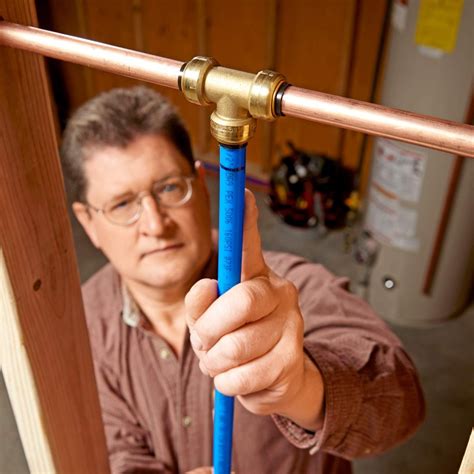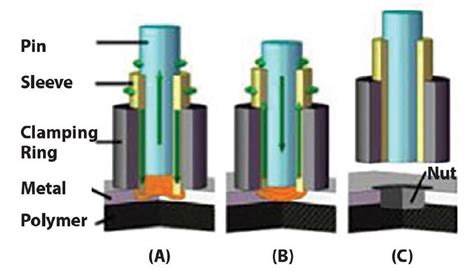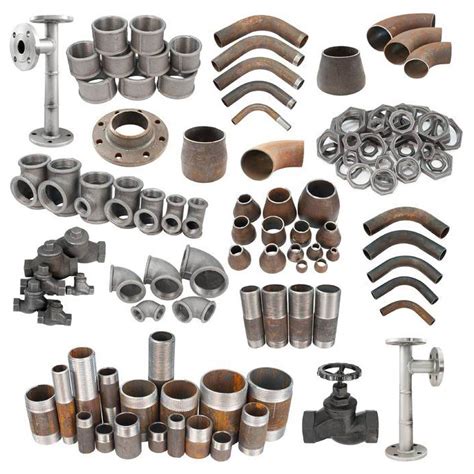dissimilar metals house When you go to add or replace plumbing lines in a house that’s more than 10 years old, chances are you won’t find new pipes that are the same kind as the old ones. That’s no big deal—hardware stores and home centers carry hundreds of different kinds of transitional fittings to help you make the connections. . See more An old work box will support up to 50 pounds of weight as long as it is attached to a support, however, if it is only attached to the sheetrock then the weight-bearing limit is zero. The weight limit is different depending on the manufacturer, so it’s best to .
0 · how to join dissimilar pipes
1 · how to join dissimilar materials
2 · dissimilar steel pipe fittings
3 · dissimilar plumbing connections
4 · dissimilar metal joining methods
5 · dissimilar materials welding
6 · dissimilar materials
7 · dissimilar material joining techniques
Weed control fabric, also known as weed membrane, is a must-have in your garden if you wish to keep those weeds at bay. Our weed barriers allow nutrients and water to pass through so as not to starve the soil.
When you go to add or replace plumbing lines in a house that’s more than 10 years old, chances are you won’t find new pipes that are the same kind as the old ones. That’s no big deal—hardware stores and home centers carry hundreds of different kinds of transitional fittings to help you make the connections. . See moreHave the necessary tools for this DIY project lined up before you start—you’ll save time and frustration. 1. Cinch clamp tool 2. 4-in-1 screwdriver 3. Adjustable wrench 4. Pipe wrench 5. Plumbers tape 6. Slip joint pliers 7. Tube cutter 8. Wire brush 9. Wrench set See more
Avoid last-minute shopping trips by having all your materials ready ahead of time. Here’s a list. 1. Couplings and fittings 2. Pipe adapters 3. . See moreLaser welding, friction welding and ultrasonic welding have all been shown to be effective techniques for joining dissimilar materials, increasing productivity in metal-to-metal, polymer-to-metal, and polymer-to-polymer joins.
Galvanic corrosion (some times called dissimilar metal corrosion) is the process by which the materials in contact with each other oxidizes or corrodes. There are three conditions that must . Painted metal siding panels in contact with galvanized metal flashing provides a good example of how dissimilar metals can react. The .A dielectric union is a special adapter or fitting utilized in the piping systems of various metals to isolate the connection of the dissimilar metals. For instance, when linking a copper pipeline to a galvanized iron pipe, a dielectric union is . Galvanic corrosion is an electrochemical process that occurs when two dissimilar metals come into electric contact with each other, and the results aren’t pretty. Ever had a hose stuck on the spigot that just wouldn’t come .
Example for which metal will corrode in contact with another dissimilar metallic material. Tin plating mitigates corrosion between galvanized steel and copper. Connecting bare copper to .
The discovery of Dissimilar metals like the picture shown here from a recent home inspection can have multiple repercussions including:Maintenance and Repair Costs: The .
Galvanic corrosion, also known as dissimilar metal corrosion or bimetallic corrosion, is an electrochemical process that leads to corrosion. It comes into play when two different metals are immersed in a conductive .Dissimilar metals are not similar, unlike or different metals; for example, aluminum wire to copper wire, also copper-clad aluminum. Over most of the centuries of building houses, copper wiring . Connecting two dissimilar metals can cause galvanic corrosion, which deteriorates metal over time. A dielectric union is a fitting designed to isolate the two metals from each other.Laser welding, friction welding and ultrasonic welding have all been shown to be effective techniques for joining dissimilar materials, increasing productivity in metal-to-metal, polymer-to-metal, and polymer-to-polymer joins.
Galvanic corrosion (some times called dissimilar metal corrosion) is the process by which the materials in contact with each other oxidizes or corrodes. There are three conditions that must exist for galvanic corrosion to occur. First there must be . Painted metal siding panels in contact with galvanized metal flashing provides a good example of how dissimilar metals can react. The coating on the vertical panels provides protection to a point, but the differential movement of the .A dielectric union is a special adapter or fitting utilized in the piping systems of various metals to isolate the connection of the dissimilar metals. For instance, when linking a copper pipeline to a galvanized iron pipe, a dielectric union is set up between the two to hold the two different metal pipelines together. Galvanic corrosion is an electrochemical process that occurs when two dissimilar metals come into electric contact with each other, and the results aren’t pretty. Ever had a hose stuck on the spigot that just wouldn’t come loose, even with a pipe wrench?
Example for which metal will corrode in contact with another dissimilar metallic material. Tin plating mitigates corrosion between galvanized steel and copper. Connecting bare copper to galvanized steel is not recommended for any environment. The discovery of Dissimilar metals like the picture shown here from a recent home inspection can have multiple repercussions including:Maintenance and Repair Costs: The presence of dissimilar metals can lead to increased chance of corrosion and possible pipe failure. Galvanic corrosion, also known as dissimilar metal corrosion or bimetallic corrosion, is an electrochemical process that leads to corrosion. It comes into play when two different metals are immersed in a conductive solution or in direct contact with each other.

Dissimilar metals are not similar, unlike or different metals; for example, aluminum wire to copper wire, also copper-clad aluminum. Over most of the centuries of building houses, copper wiring was used to provide electricity to the home. Connecting two dissimilar metals can cause galvanic corrosion, which deteriorates metal over time. A dielectric union is a fitting designed to isolate the two metals from each other.Laser welding, friction welding and ultrasonic welding have all been shown to be effective techniques for joining dissimilar materials, increasing productivity in metal-to-metal, polymer-to-metal, and polymer-to-polymer joins.
Galvanic corrosion (some times called dissimilar metal corrosion) is the process by which the materials in contact with each other oxidizes or corrodes. There are three conditions that must exist for galvanic corrosion to occur. First there must be . Painted metal siding panels in contact with galvanized metal flashing provides a good example of how dissimilar metals can react. The coating on the vertical panels provides protection to a point, but the differential movement of the .
how to join dissimilar pipes
how to join dissimilar materials
A dielectric union is a special adapter or fitting utilized in the piping systems of various metals to isolate the connection of the dissimilar metals. For instance, when linking a copper pipeline to a galvanized iron pipe, a dielectric union is set up between the two to hold the two different metal pipelines together.
Galvanic corrosion is an electrochemical process that occurs when two dissimilar metals come into electric contact with each other, and the results aren’t pretty. Ever had a hose stuck on the spigot that just wouldn’t come loose, even with a pipe wrench?Example for which metal will corrode in contact with another dissimilar metallic material. Tin plating mitigates corrosion between galvanized steel and copper. Connecting bare copper to galvanized steel is not recommended for any environment.

dissimilar steel pipe fittings
The discovery of Dissimilar metals like the picture shown here from a recent home inspection can have multiple repercussions including:Maintenance and Repair Costs: The presence of dissimilar metals can lead to increased chance of corrosion and possible pipe failure.
dissimilar plumbing connections
Galvanic corrosion, also known as dissimilar metal corrosion or bimetallic corrosion, is an electrochemical process that leads to corrosion. It comes into play when two different metals are immersed in a conductive solution or in direct contact with each other.
dissimilar metal joining methods

Still, it’s possible to weld thin sheet metal using the MIG (GMAW), TIG (GTAW), and stick (SMAW) processes. But MIG and TIG provide the best results. This article will teach you how to weld thin gauge metal using each arc welding process and present the common pitfalls beginners make.
dissimilar metals house|dissimilar steel pipe fittings